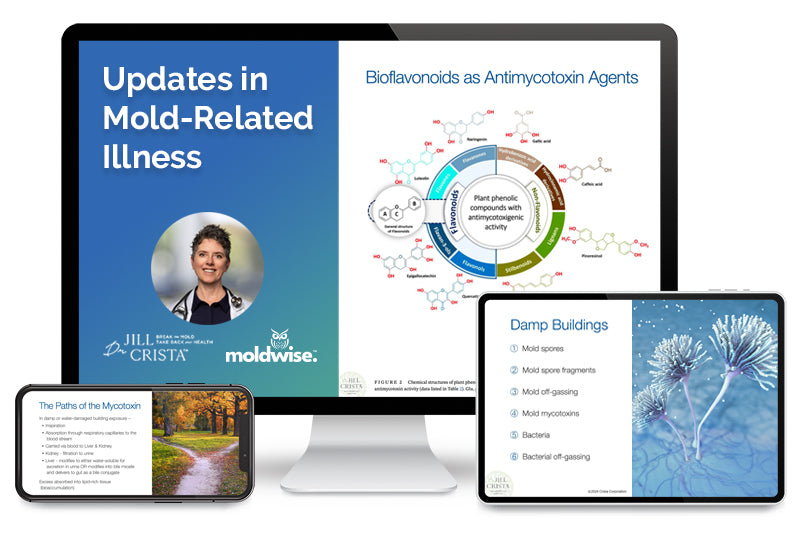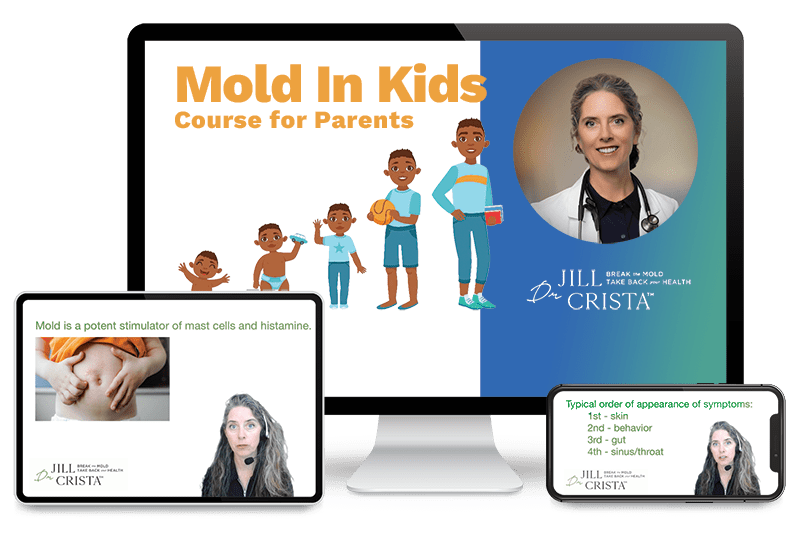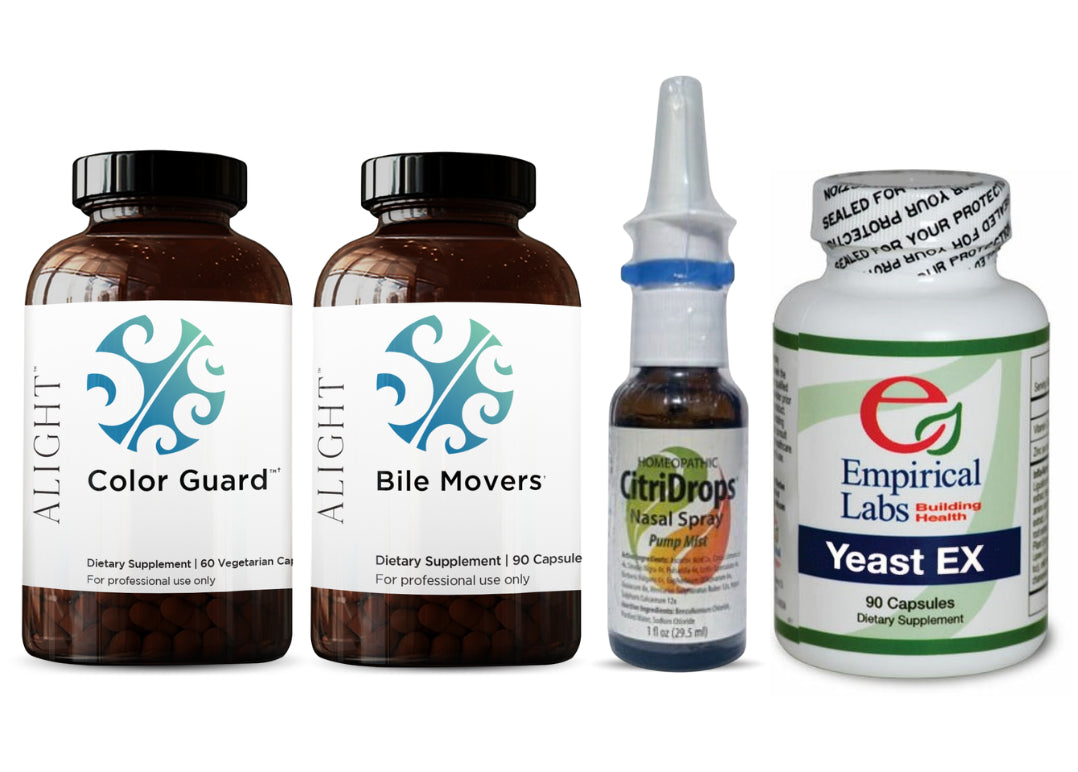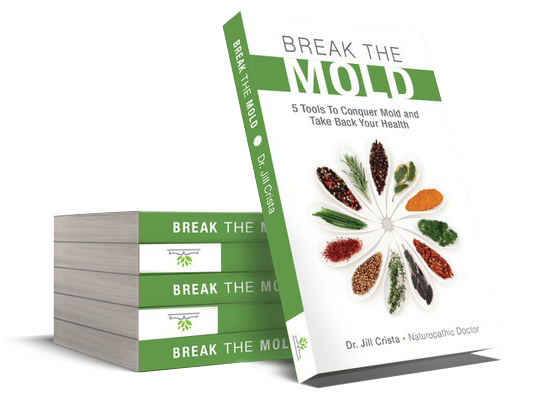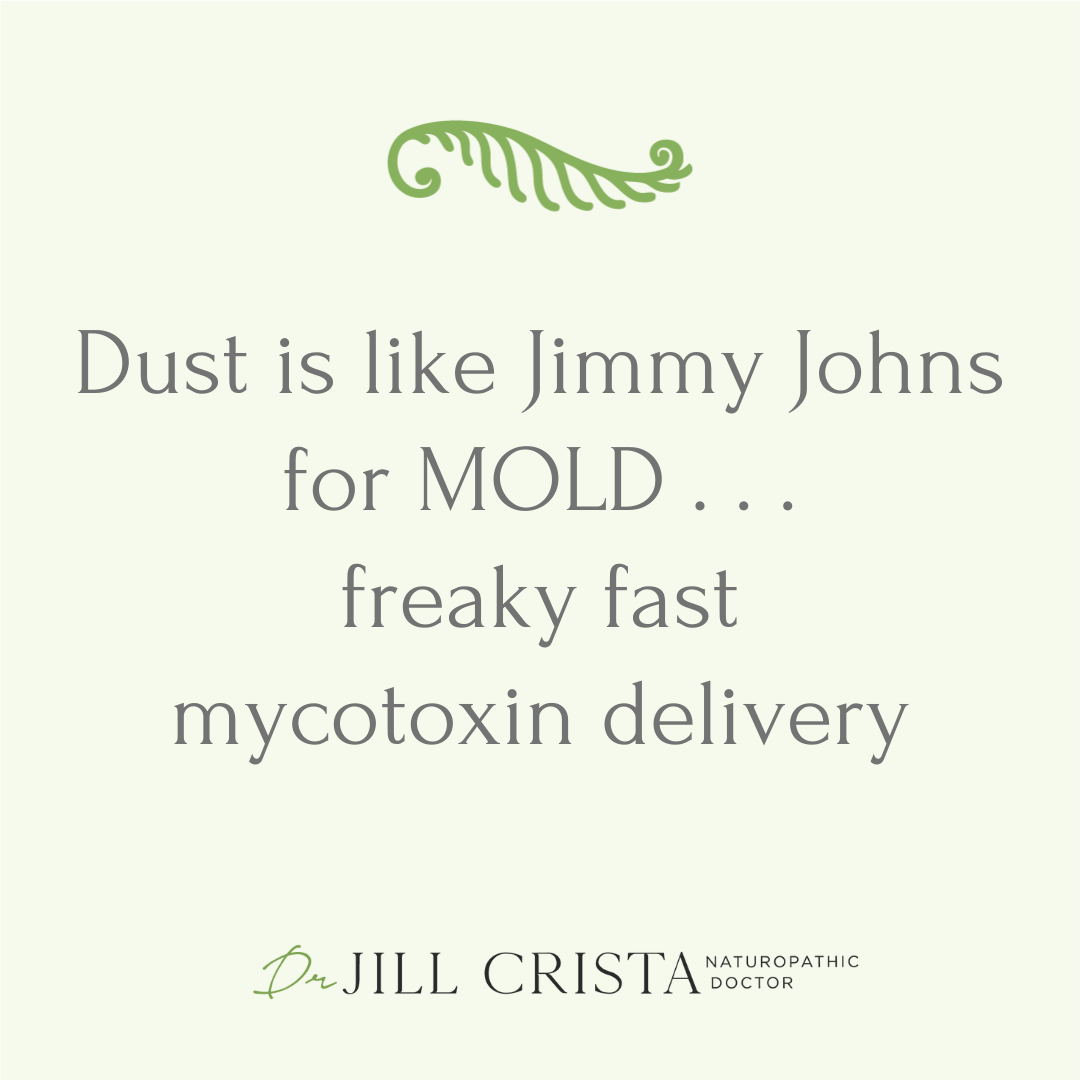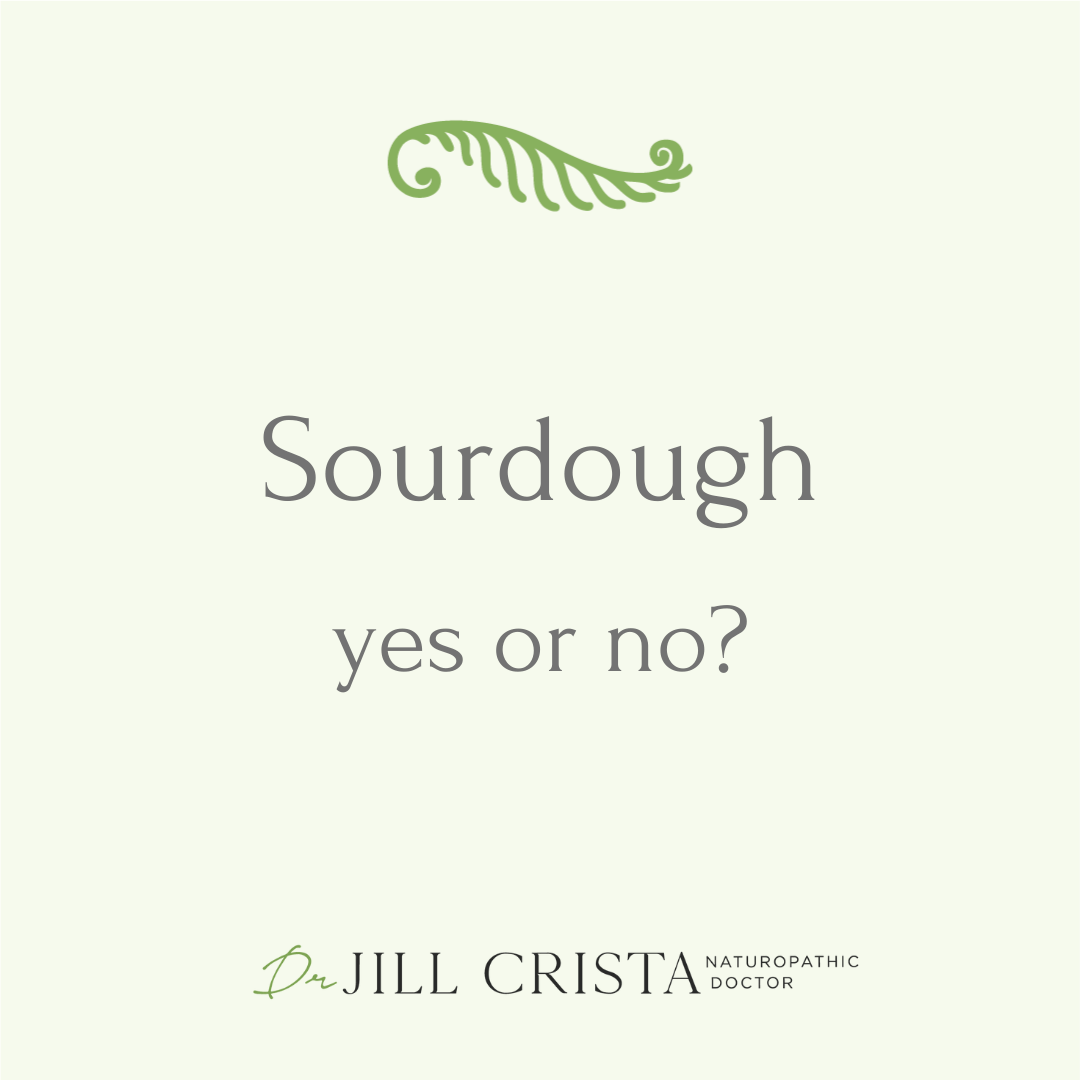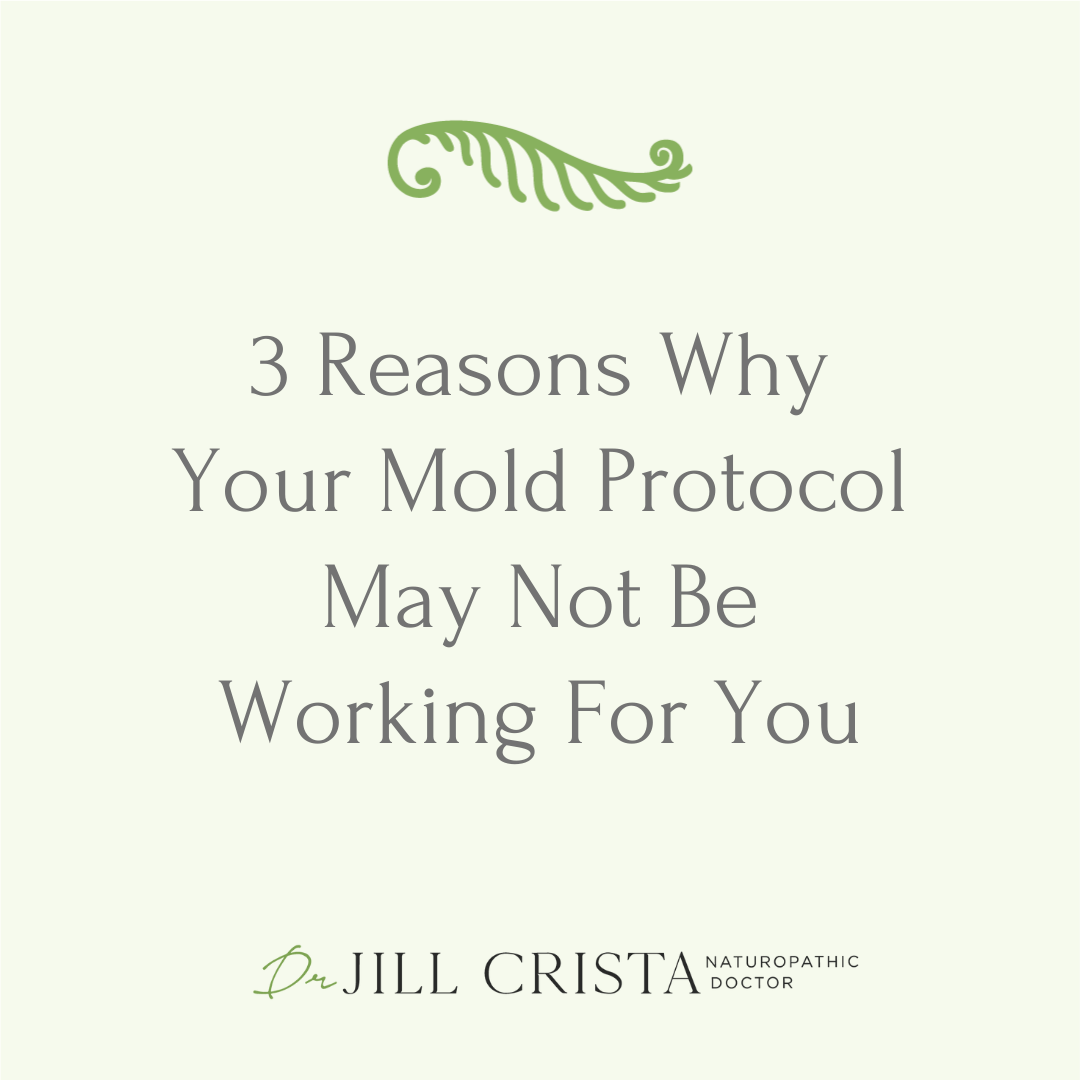
Got a dusty home making your mold symptoms worse?
Hi, I’m Dr. Jill Crista, naturopathic doctor, mold expert, and author of Break the Mold.
I see it all the time: people trying everything to heal but still feeling sick. Then we take a closer look and there it is… dust. That barely-there layer on your bookshelf might not seem like much, but to mold, it’s a freaky fast delivery system – just like Jimmy John’s delivery guys.
Let’s walk through how dust moves mycotoxins into your body and how antifungal dusting strategies can keep your lungs safe and your recovery on track.
Why Dust Is Mold’s Freaky Fast Delivery System
Dust is like the Jimmy John’s of mycotoxins. One breath in a moldy home and—bam—you’ve just inhaled a dose of toxins. Here’s why:
- Not Just a Nuisance: We used to think dust was just annoying. Now we know it’s ultrafine particulates that carry mold’s most toxic byproducts.
- Seasonal Risk: In the north, where homes are shut tight for months, dust accumulates fast, and so do the mycotoxins.
- Quick Impact: One deep breath in a moldy environment and you’ve just been delivered mycotoxins deep into your lungs.
How Dust Carries Mycotoxins Into Your Lungs
Ultrafine particulate – aka dust – is mold’s favorite hitchhiking vehicle. Here’s how it works:
- Mycotoxin Hitchhikers: Mold toxins cling to dust. Once airborne, it delivers them directly to your lungs with each breath.
- Air Filter Overload: If you don’t change air filters, then your lungs have to do the work.
- Antifungal Defense: This is where your antifungal strategy starts – right at the air-dust interface. For patients still stuck in mold, I lay out exactly how to protect your system in my 9 Things to Know While You’re Still in Mold course.
My Antifungal Approach to Dust Control
You can take charge by doing what I call “Dust With Gusto.” This isn’t just about cleaning. It’s an antifungal act of resistance.
- Low-Mold Environment: Frequent, intentional dusting keeps fungal spores and toxins from settling and recirculating.
- Antifungal Cleaning: Use natural, antifungal cleaning agents like vinegar, essential oils (like thyme or tea tree), or my All-Natural DIY spray to keep dust at bay.
- Air Filtration: Change air filters regularly, especially in high-use seasons.
Not sure what to use? I walk you through air filter selection in the course video.
Tips to Dust Smart and Conquer Mold
Let’s make dusting more than a chore. Make it part of your antifungal protocol.
- Dust Regularly: Turn on music, open windows (weather permitting), and get moving.
- Use Safe Cleaners: Avoid synthetic fragrances or chemical sprays. Stick with antifungal-friendly ingredients.
- Change Air Filters: Every 1–3 months is a good rule to prevent mycotoxin build up, especially if you’re still in a moldy environment.
- Minimize Mold Inside: Reduce moisture, run dehumidifiers, and remove porous items that harbor dust and spores.
- Get Educated: Stuck in mold and can’t get out yet? Learn how to protect your body while you wait. My 9 Things to Know While You’re Still in Mold course gives you real steps to reduce symptoms, even before remediation.
You’re Ready to Break the Mold and Thrive!
Mold uses dust to sneak toxins into your body, but now you know how to block its path.
Dusting may seem small, but it’s one of the most powerful routines for reducing mold exposure. When paired with antifungal strategies and air purification, it becomes a key part of healing.
Save this guide. Share it with someone living in mold.
And if you’re still stuck in exposure, don’t wait. Start here with the 9 Things to Know While You’re Still in Mold course. One hour. Nine tools. Real hope.
Sign up for my newsletter for weekly recovery tips.
You’re not stuck. You’re already taking the first step.
Disclaimer This content is health information and not intended as personal medical advice. Viewing will not establish a doctor-patient relationship. It is not intended to diagnose, treat, cure, or prevent any disease or medical condition. The information discussed is not intended to replace the advice of your healthcare provider. Reliance on information provided by Dr. Jill Crista, employees, or others appearing at the invitation of Dr. Crista is solely at your own risk.at the invitation of Dr. Crista is solely at your own risk.

